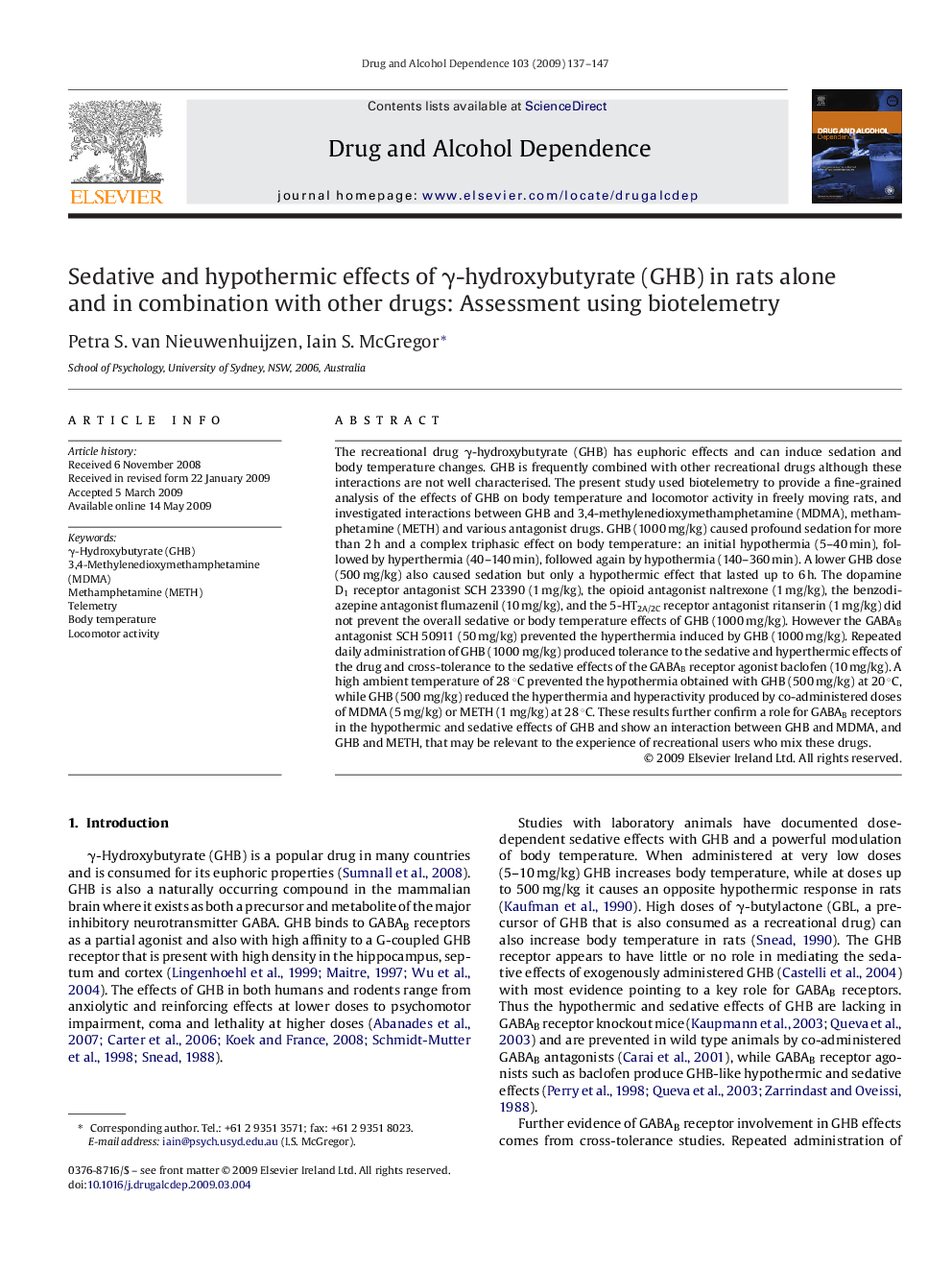| Article ID | Journal | Published Year | Pages | File Type |
|---|---|---|---|---|
| 1071201 | Drug and Alcohol Dependence | 2009 | 11 Pages |
The recreational drug γ-hydroxybutyrate (GHB) has euphoric effects and can induce sedation and body temperature changes. GHB is frequently combined with other recreational drugs although these interactions are not well characterised. The present study used biotelemetry to provide a fine-grained analysis of the effects of GHB on body temperature and locomotor activity in freely moving rats, and investigated interactions between GHB and 3,4-methylenedioxymethamphetamine (MDMA), methamphetamine (METH) and various antagonist drugs. GHB (1000 mg/kg) caused profound sedation for more than 2 h and a complex triphasic effect on body temperature: an initial hypothermia (5–40 min), followed by hyperthermia (40–140 min), followed again by hypothermia (140–360 min). A lower GHB dose (500 mg/kg) also caused sedation but only a hypothermic effect that lasted up to 6 h. The dopamine D1 receptor antagonist SCH 23390 (1 mg/kg), the opioid antagonist naltrexone (1 mg/kg), the benzodiazepine antagonist flumazenil (10 mg/kg), and the 5-HT2A/2C receptor antagonist ritanserin (1 mg/kg) did not prevent the overall sedative or body temperature effects of GHB (1000 mg/kg). However the GABAB antagonist SCH 50911 (50 mg/kg) prevented the hyperthermia induced by GHB (1000 mg/kg). Repeated daily administration of GHB (1000 mg/kg) produced tolerance to the sedative and hyperthermic effects of the drug and cross-tolerance to the sedative effects of the GABAB receptor agonist baclofen (10 mg/kg). A high ambient temperature of 28 °C prevented the hypothermia obtained with GHB (500 mg/kg) at 20 °C, while GHB (500 mg/kg) reduced the hyperthermia and hyperactivity produced by co-administered doses of MDMA (5 mg/kg) or METH (1 mg/kg) at 28 °C. These results further confirm a role for GABAB receptors in the hypothermic and sedative effects of GHB and show an interaction between GHB and MDMA, and GHB and METH, that may be relevant to the experience of recreational users who mix these drugs.
